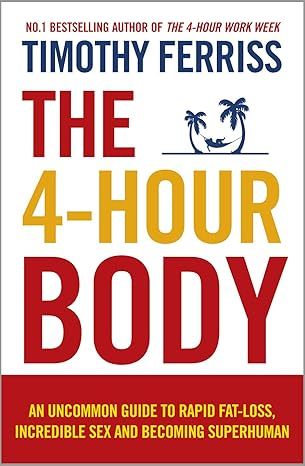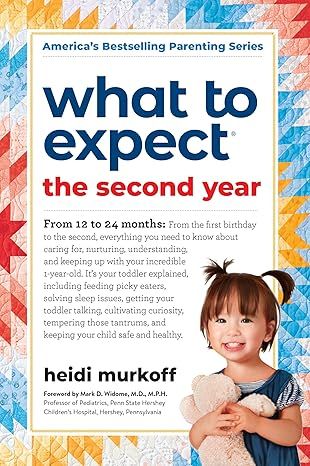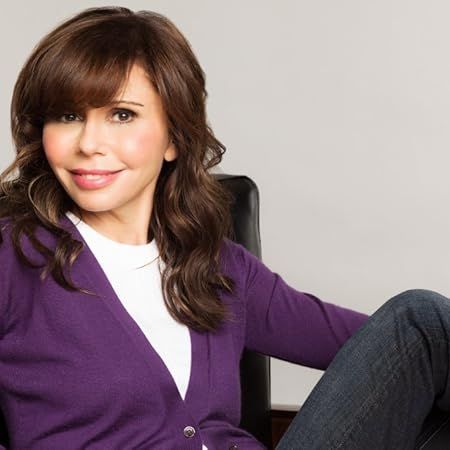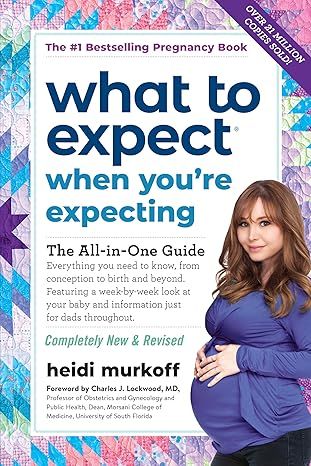What to Expect the Second Year: From 12 to 24 Months
4.7
-
1,978 ratings
The complete why, when, and how-to guide for parenting a one-year-old.
- When will my 13-month-old start to walk?
- Shouldn’t my 14-month-old be talking already?
- How can I get my picky eater to pick something besides pasta?
- Sure, I can ignore a tantrum at home—but what am I supposed to do in the middle of the mall?
- Why does my toddler have such a hard time sharing? Taking turns? Playing nicely?
- When should we break the bottle habit . . . and what about the pacifier?
- How do I get my almost-two-year-old to settle down for bed—and stay asleep all night?
Just in time for those first steps, here’s the next step in What to Expect. Picking up the action at baby’s first birthday, What to Expect the Second Year is the complete guide to the “wonder year”—twelve jam-packed months of amazing milestones, lightning-speed learning, and endless discoveries. Filled with must-have information on everything from feeding (tips to tempt picky palates) to sleep (how to get more of it), talking (decoding those first words) to behavior (defusing those first tantrums). Plus, how to keep your busy one-year-old safe and healthy.
Kindle
$11.99
Available instantly
Hardcover
$2.16
Paperback
$11.39
Ships from
Amazon.com
Payment
Secure transaction
ISBN-10
0761152776
ISBN-13
978-0761152774
Print length
540 pages
Language
English
Publisher
Workman Publishing Company
Publication date
April 14, 2011
Dimensions
5.9 x 1.13 x 9.05 inches
Item weight
1.52 pounds
Popular highlights in this book
Limit milk intake to 16 ounces a day, juice to no more than 4 to 6 ounces.
Highlighted by 289 Kindle readers
Start teaching your little one how to rinse after brushing (most toddlers master the rinse and spit around age 2).
Highlighted by 207 Kindle readers
It’s best to introduce a bed at about age 2½ or 3, or, as the AAP advises, to switch out of the crib when a tot is taller than 35 inches.
Highlighted by 179 Kindle readers
Product details
ASIN :
0761152776
File size :
4979 KB
Text-to-speech :
Enabled
Screen reader :
Supported
Enhanced typesetting :
Enabled
X-Ray :
Enabled
Word wise :
Enabled
Editorial reviews
From Publishers Weekly
Popular parenting guru Murkoff offers a sequel to her What to Expect in the First Year in this all-inclusive look at the toddler from 12 to 24 months. In 15 chapters the authors cover feeding, sleeping, learning, playing, health and safety, injuries and developmental disorders, discipline, and other issues with a meaty center section on behavior. The text opens with the stunning array of developmental milestones that characterize this action-packed period in a child's life, beginning at 12 to 13 months, when a toddler says two words and cruises from place to place while holding on to furniture, to 24 months when he or she can run, kick a ball, and use 50 words or more. While noting that there's a "wide range of normal," Murkoff also warns parents to "follow your gut" and check with your pediatrician if anything seems behind schedule. Murkoff covers practical matters like the importance of parents learning CPR, frequently citing professional guidelines (i.e., experts advise no TV for kids under two). She also addresses less critical topics, such as how to get a blob of oatmeal out of a toddler's hair or deal with a youngster's "wardrobe monotony." Just as expected, Murkoff offers sound advice and reassurance that will help parent and toddler stay grounded during this whirlwind period of growth and change. (May)
About the Author
Heidi Murkoff is the author of the world’s bestselling What to Expect® series of pregnancy and parenting books, with over 43 million copies in print in 44 languages. She is also the creator of WhatToExpect.com and the WhatToExpect app, a community of 20 million parents, and the face of the app’s week-by-week pregnancy and first year videos. Using the power of the WTE platforms, Heidi works closely with the CDC, HHS, AAP and other public health organizations to share vital messages about maternal and infant health and safety. Her passionate commitment to the wellbeing of all moms and babies led her to found the What to Expect Project (WTEP), a nonprofit organization dedicated to ensuring that every mom receives the empowering information and nurturing support she needs to deliver a healthy pregnancy, safe delivery, and healthy future to herself and the baby she loves. Along with the WTEP, Heidi advocates actively in Congress for legislation and policies supporting expecting and new moms and families, including military families. Since 2013, she has hosted close to 300 Special Delivery baby showers for tens of thousands of military moms and dads serving far from family and friends at bases around the world. In 2022, she and her husband Erik received the Elizabeth and Zachary Fisher Distinguished Civilian Humanitarian Award for their support of military families.
Visit Heidi on Facebook, Twitter and Instagram @HeidiMurkoff and @WhattoExpect.
Read more
Sample
FOREWORD
A Road Map
........................................
What happens on the morning of the first birthday? Does yesterday’s infant awake a fully formed toddler? Does child development pay some special respect to the Gregorian calendar? And, more to the point, must parents one day put aside their infant parenting skills, and open a new toolbox of skills for parenting a toddler?
The answer, of course, is “no.” Biologically, the first birthday is a non-event. The day of and the days after the birthday celebration are not noticeably different than those before. From the standpoint of a child’s growth and development—physical development, intellectual development, emotional development—you might as well have held the party at the end of the eleventh month or the thirteenth. Milestones happen on their own schedule, with wide variation and with disregard for the calendar. As before, your child’s growth and development will progress in fits and starts. Viewed over months, rather than days, developmental progress appears smooth. Things move mostly in the right direction.
Yet there is some biological and developmental rationale for thinking about the second year of life as a discrete phase. Entering the second year, the child has grown to roughly three times his or her birthweight, and has gained half again his or her birth length. From now on, the growth trajectory will largely depend on some combination of genetics and environment, rather than factors left over from pregnancy and birth. Babies born prematurely—or otherwise small—have mostly caught up to their peers. Likewise, babies who were large at birth have now found a growth path consistent with genetics and family patterns. Most 1-year-olds are capable (or near capable) of taking their first steps, and even those who still need to hold on to furniture or a hand, do so mostly out of a lack of bravery rather than a lack of balance.
And, it is right around that arbitrary first birthday that most children achieve what is perhaps the most surprising of milestones: the ability to appreciate and utilize symbols. Symbols with consistent meanings make possible much more efficient communication and the seemingly exponential learning characteristic of the second year. First evidence of this is when a toddler points to things. Finger-pointing is code. It has one of two meanings: either indicating a want or drawing attention to something interesting. Finger-pointing has these same meanings, whether the toddler is doing the pointing, the parent is doing the pointing, or an older sibling is doing the pointing.
Words are also symbols. One-year-olds enter toddlerhood with a first vocabulary. That small handful of words—perhaps just two or three at first—also have specific and consistent meanings. Mama and Dada are specific words for the right people, and those almost-words for the dog, for a sibling, for the bottle or the binky consistently mean the same things to both you and your toddler. Pretty amazing.
Socially, it is at or around the first birthday that a child really becomes his own person. Toddlers finally see themselves as separate from their mothers and fathers, no longer extensions or appendages of their parents. Of course, they show this newly realized independence in both welcomed and unwelcomed ways. The first brave steps are as often away from the parents as toward them. The word “no” develops an edge, often becoming decidedly defiant: “Pay attention, I have thoughts of my own.” Temper tantrums are just around the corner. It is almost as if a little teenager has moved in.
I’ll say less about how that second year ends: how your toddler will become a preschooler. But, suffice it to say, by two years, children have acquired a much more complex emotional and imaginative life. They have acquired communication tools and skills that will soon have them talking in sentences—sentences good enough for conversation. Imagination and creativity, supported by advanced motor skills, keep parents on their toes. Making friends, developing empathy, and wanting to please others are developmental tasks and hallmarks for the stage of development just beyond the purview of this book.
Coming on the heels of a series of successful and well-received What to Expect books, What to Expect the Second Year is a testament to how much we benefit from—road maps in navigating pregnancy and child-rearing. Constructing one looks particularly easy when it is done well. But consider constructing a road map for travelers when you know that each of them will take a slightly different route to get to that same destination: becoming a grownup. Figure out how to suggest paths for travelers who have widely differing needs as well as differing strengths, competencies, and challenges. Faced with a complex journey, convince the driver (the parent) that routes are navigable, that most judgments and intuitions are correct, and that it is okay to make an occasional wrong turn. Do all that without dampening a parent’s enthusiasm and excitement, or their appreciation of the rewards for the effort. That is what this book sets out to accomplish.
Heidi Murkoff has stamped this book with her familiar trademarks. First, is her reassuring and optimistic tone. She reminds us that minor deviations from the expected course of behavior, growth, nutrition, or development are usually of little consequence. She reminds us that the range of normal is wide, and that things, in most cases, usually turn out all right. She gives us permission to be less than perfect, and reminds us that course corrections are routine. She is both a coach and a cheerleader.
The Second Year is authoritative—when it needs to be. Like its predecessors, it relies heavily on professional guidelines and recommendations, particularly in areas such as immunization, nutrition, safety, and management of common illnesses. Even complicated recommendations (such as those for CPR) are made clear and compact without cutting corners. Yet, Heidi knows when to go out on a limb. Some of her suggestions about probiotics, herbals, and other nutritional supplements, for example, will be of interest to readers even if they do not enjoy full consensus among the experts. Rather, she calls on emerging research and thought. She labels this material appropriately; her policy is “full disclosure.”
Heidi’s voice is familiar. It’s not quite your mom’s voice, nor is it your best friend’s, nor is it the voice of your favorite school teacher—but neither is it the voice of a stranger. This voice recognizes and acknowledges your frustrations and sleep deprivation. It also recognizes how, on some days, some little thing your toddler says or does creates such surprise and pleasure. Such days, the world is good.
The Second Year offers frequent insights—frequently with a smile. It reminds us that, “the fashion police do not ticket toddlers.” And, “If there is a law of toddler physics, it is that little bodies in motion stay in motion.” Heidi reminds parents repeatedly to stay calm and to stick to routines. Set limits, but sometimes go with the flow. When you reach an impasse, change the subject. When you run out of parenting steam, take a break, read an adult book, go to the gym, don’t ever turn down help when you need it.
Medical students learn early: Primum non nocere: “First, do no harm.” It becomes mantra for those who choose pediatrics. So what might sometimes seem an excess of caution in these pages, really is not. You will detect this caution in the discussion of environmental toxins, response to fever, and management of injuries. Read labels, use medicines only when needed, store things safely. Seek layers of protection, whether the potential hazard is poison, sunlight, or deep water. If you are not sure your child is feeling well, if it seems like something is not right, or if you are just plain worried, seek medical advice.
Beyond the opinions of experts, Second Year relies on experience and common sense. It favors what works in practice over what works in theory. It favors the middle ground over extremes. In discussing discipline, Heidi reminds us that excessive permissiveness leads to children who are often “rude, selfish, quick to argue, slow to comply.” Beyond that, discipline is about preparation for the real world: “where rules rule.” She reminds us that there is no one best way to discipline. Be fair, avoid extremes, let consequences teach when you can, especially natural and relevant consequence. Above all, dispense discipline with love.
This practical approach extends to discussion of nutrition (eat sensibly), promoting early learning (don’t raise a “techno-tot”), treating illness (medicate, but only when necessary), and much else. It is an approach that has weathered well. It is the zone where most parents, with good reason, feel comfortable.
Mark D. Widome, M.D., M.P.H.
Professor of Pediatrics
The Pennsylvania State University
Read more
About the authors
Heidi Murkoff
Heidi Murkoff is the author of the What to Expect®; series and author of Eating Well When You're Expecting, The What to Expect Pregnancy Journal & Organizer, What to Expect the First Year, The What to Expect Baby-Sitter's Handbook, and the What to Expect Kids series from HarperCollins. Her interactive website is www.whattoexpect.com, and she lives with her family in Los Angeles, California.
Photo by Heidi Murkoff (Email) [CC BY-SA 3.0 (http://creativecommons.org/licenses/by-sa/3.0)], via Wikimedia Commons.
Read more
Reviews
Customer reviews
4.7 out of 5
1,978 global ratings
Brandi
5
Perfect
Reviewed in the United States on February 13, 2024
Verified Purchase
Bought it used and no issues!
momof2sweetboys
5
Great info!
Reviewed in the United States on June 28, 2024
Verified Purchase
Perfect gift for parents of young children! Wealth of information inside, even used by pediatricians as a reference book.
SH
5
Terrific reference guide
Reviewed in the United States on November 14, 2023
Verified Purchase
These are go-to books, and I am reviewing this to stay abreast of the latest i info (I’m a professional nanny). Arrived in perfect condition, very quickly. Very happy with my purchase.
Top Heidi Murkoff titles
View allSimilar Books

The Wealth Money Can't Buy: The 8 Hidden Habits to Live Your Richest Life
4.7
-
1,026
$0.99

GROW UP: Becoming the Parent Your Kids Deserve
4.3
-
155
$0.99

Love Unf*cked
4.6
-
546
$0.99

The 4-Hour Body: An Uncommon Guide to Rapid Fat-loss, Incredible Sex and Becoming Superhuman
4.4
-
8,994
$8.09

What to Expect the First Year: (Updated in 2024)
4.8
-
13,511
$11.62

She's Not There: A Life in Two Genders
4.5
-
1,610
$12.99
Best sellers
View all
The Tuscan Child
4.2
-
100,022
$8.39

The Thursday Murder Club: A Novel (A Thursday Murder Club Mystery)
4.3
-
155,575
$6.33

Sapiens: A Brief History of Humankind
4.6
-
140,302
$13.49

The Butterfly Garden (The Collector, 1)
4.3
-
88,556
$9.59

Things We Hide from the Light (Knockemout Series, 2)
4.4
-
94,890
$11.66

The Last Thing He Told Me: A Novel
4.3
-
154,085
$2.99

The Perfect Marriage: A Completely Gripping Psychological Suspense
4.3
-
143,196
$9.47

The Coworker
4.1
-
80,003
$13.48

First Lie Wins: A Novel (Random House Large Print)
4.3
-
54,062
$14.99

Mile High (Windy City Series Book 1)
4.4
-
59,745
$16.19

Layla
4.2
-
107,613
$8.99

The Locked Door
4.4
-
94,673
$8.53



